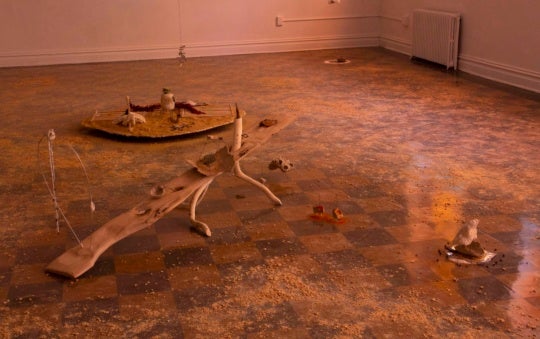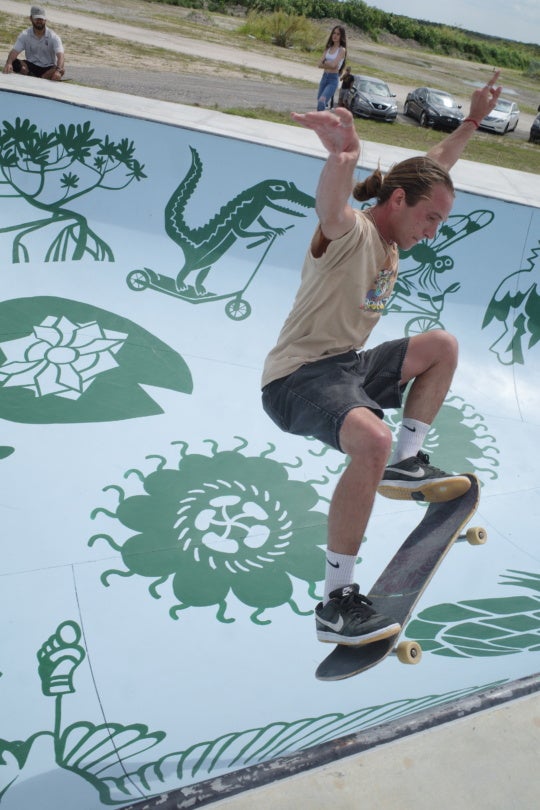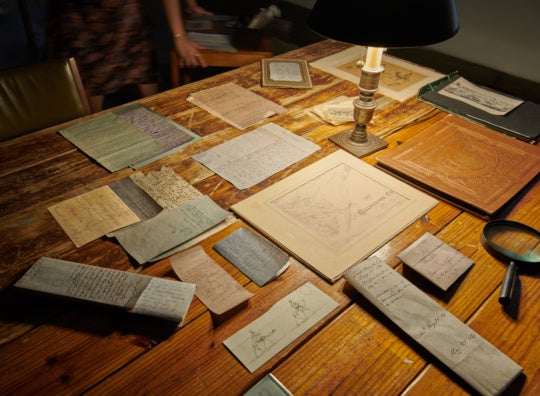
Jennie Lobato has been interested in art for as long as she could remember. She also found great value in working with kids and helping those in need. But it wasn’t until she got a job at an advertising agency, working in interactive motion media design, that she realized how powerful combining those interests could be for others.
“Art had always been my refuge as a kid, my saving grace,” Lobato says, of her impetus to pick up a paint brush or crayon. When the world around her younger self didn’t make sense, she created a visual place on paper that did. While her brother craved trips to Toys R Us, Lobato’s parents knew to take her to the art store. “It wasn’t until I got stuck behind a desk that I realized my refuge was gone,” she recalls.
That’s when she first got the idea to launch the Drawchange Foundation, an Atlanta-based nonprofit that works with impoverished children, helping empower them as creative thinkers so they become better world citizens. Looking back, Lobato says, “I realized that’s what art was doing for me.”
At a young age, Lobato saw the impact that public art could have on inner-city kids, shifting their interest in their life circumstances. So armed with a BFA in painting from Baltimore College of Art and a deeply rooted belief that art can help children, Drawchange hit the scene in 2009. Lobato set out to establish arts programs and curriculum with at-risk youth throughout the world. The organization currently works with a variety of orphanages, children’s centers, and schools in Atlanta, Costa Rica, and Ethiopia.

Lobato’s global outlook was inspired by a trip to Cartago, Costa Rica, where she again witnessed the immediate impact that painting murals had in engaging elementary school-aged children. She was motivated to expand opportunities like that to kids in need everywhere. It turns out Atlanta was not such a bad place to start.
Drawchange struck up partnerships with the Bhutanese refugee community in Clarkston, the Ashford-Dunwoody YMCA after-school program, and the homeless shelter Nicholas House. Collaborations like these have resulted in art workshops with young people throughout the city, public art projects, and simply exposing children to art supplies and practices that would otherwise not be available to them.
Lobato recently returned from an 18-day trip to Addis Ababa, Ethiopia, where she and members of her team established relationships with the directors of various orphanages and children’s centers. Lobato had already introduced herself via email, so this trip was intended to cement which locations would be best equipped to take on the Drawchange art curriculum. Doing so is no small thing, Lobato says. The school or center must make a six-year commitment, so students are exposed to a consistent and evolving education. Once an agreement between the centers and Drawchange is made, Drawchange leaves enough supplies for one year, along with a monthly curriculum so teachers understand how to incorporate the supplies into lesson plans. The students’ progress is tracked over time.
Getting the nod of approval is no easy thing for Lobato and Drawchange, either. Children’s organizations receive solicitations from all over—helping kids in Africa, particularly in Ethiopia, is a popular prospect. In addition, the value of visual art as a respected field is not very high in the communities she engages in Ethiopia, Lobato says. Plus, in many cases, the children simply have not been exposed to the arts, so they often don’t even know where to start when presented with ample supplies.
“I brought a bunch paper and crayons to a preschool in Ethiopia,” Lobato recalls of her trip this fall. “The kids were not coloring. I asked the teacher if they had ever used crayons before. The teacher responded that they’d never seen crayons before, and that they had never had their own sheet of paper.” That really puts things in perspective for Lobato. “That hit me very close to home. I can’t imagine not growing up with crayons and paper.”

In order to define a curriculum that is most effective, Lobato and her volunteer team use a non-verbal test that evaluates students’ creativity level, based on another scientifically proven method. Students may be given a sheet of paper with pre-printed squares and drawing utensils. Then, in the course of 15 minutes, students are observed in how they approach the sheet—some only draw within the confines of the squares, others may use the entire sheet, linking the squares to create a robot, for example.
This is the first step in defining how a child might approach art, Lobato says. But it also lends insight into how they deal with life circumstances, too. Do they see only what appears to be obvious, or do they see potential opportunities waiting down the line? For kids growing up in harsh living conditions especially, the ability to think creatively may impact their everyday life in real and tangible ways—from visualizing a roof over their head to finding ways to get the next hot meal. The students are retested quarterly.
Back in Atlanta, Lobato finds that the challenges of getting art in front of disadvantaged kids are not necessarily easier than doing so in Addis Ababa or Cartago. This January will mark Drawchange’s five-year anniversary and yet, “I have still not been able to enter the Atlanta school system,” Lobato marvels. “We all know why—they have to worry about standardized testing, the arts are getting cut. But that is very upsetting to me.“
One obstacle to working in Atlanta public schools, Lobato believes, is competition. A lot of people want to help kids, feed kids, and “that’s extremely valid,” she says. Also, Drawchange is a newer organization, and she thinks some needed trust has yet to be established with city and county officials. It’s a work in progress.
As Lobato plans for Drawchange’s next five years, Lobato hopes to establish a home for the organization—a welcoming space that houses offices, can support volunteers, a small staff, and oversee multiple international projects happening concurrently. She hopes to be able to tap into Atlanta’s public schools, and increase the organization’s work in the U.S. as well.
In the meantime, Lobato stays on top of the active programs in Costa Rica and Atlanta, while doing her best as CEO to increase Drawchange’s funding and exposure. Last November, she hosted Drawn to Change at the Goat Farm Arts Center. Thirty-two artists submitted multiple works for auction, and 50-100 percent of the proceeds went directly to fund Drawchange’s Atlanta outreach—to continue local programs. Participating artists from Free Art Fridays, the underground collective, included Evereman, Chris Hamer, and Olive47. Sam Flax sponsored the event.
“It was a great success,” Lobato says. And just the latest of many that Lobato and her students hope to have in the near future.
With Drawchange, Jennie Lobato Exposes Children to Art
Related Stories
Ghost
Features
Reviews
Blueprints for the Visitation
In our inaugural release of the GHOST theme, Valentin Diaconov traces the practice of larí garcia, who utilizes objects within their installations as a postscript to loss and grief.
Trail Skate Park
Francess Archer Dunbar highlights the Trail Skate Park, a skate park which sits on the Miccosukee Reservation in central South Florida, that serves as a vital community space at crucial junctures in the Everglades' environmental history.
From Gulf to Gulf: Myriam Amri and Xitlalli Alvarez Almendariz’s Archival Hauntings in An Act to Prohibit Camels and Dromedaries from Running at Large, Friends Gallery, Houston
May Howard reviews the role of artists-archivists Myriam Amri and Xitlalli Alvarez Almendariz in An Act to Prohibit Camels and Dromedaries from Running at Large at Friends Gallery, Houston.




